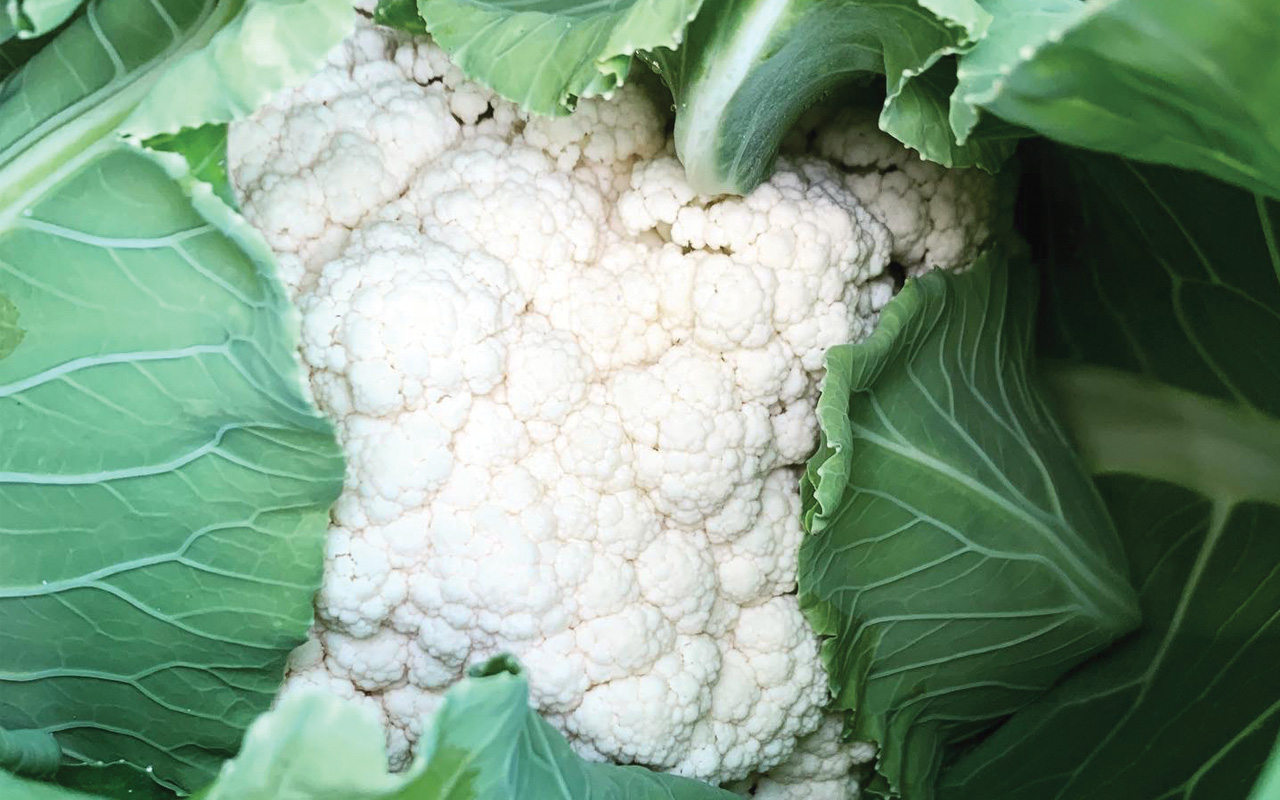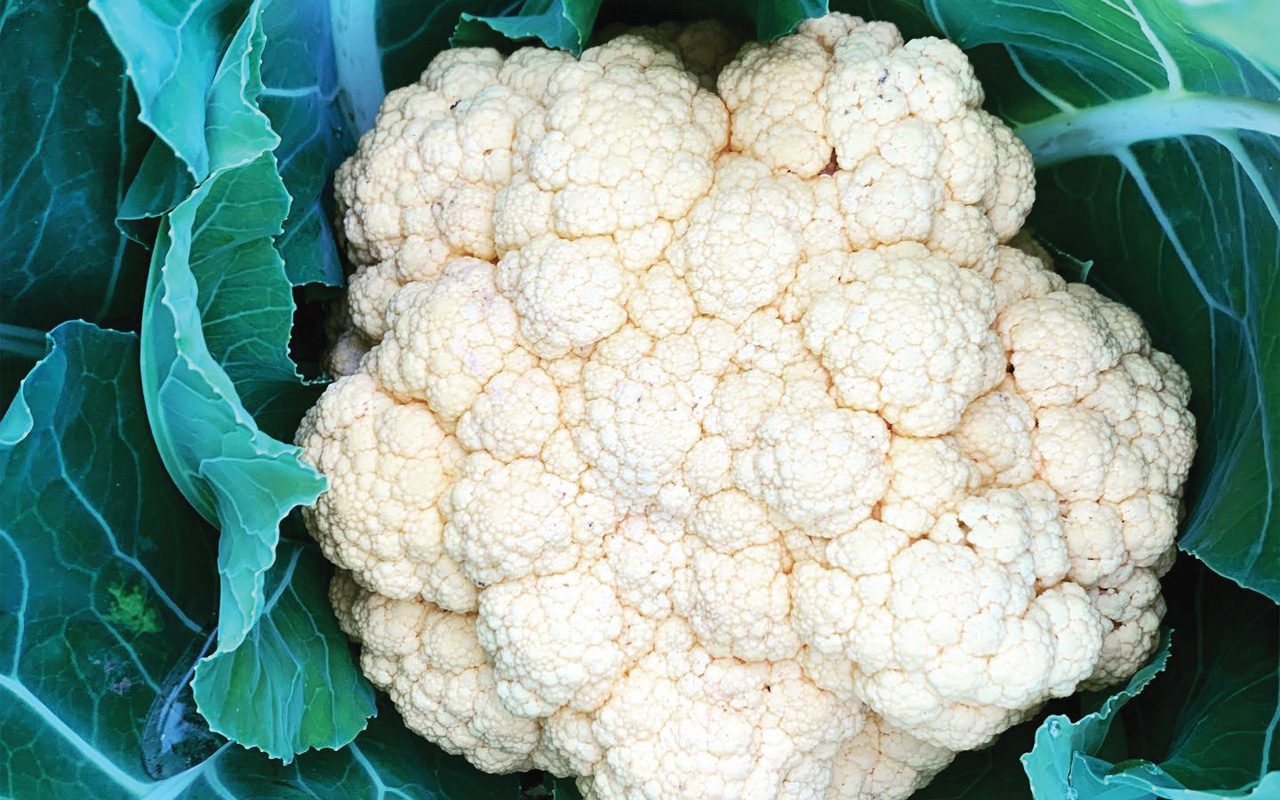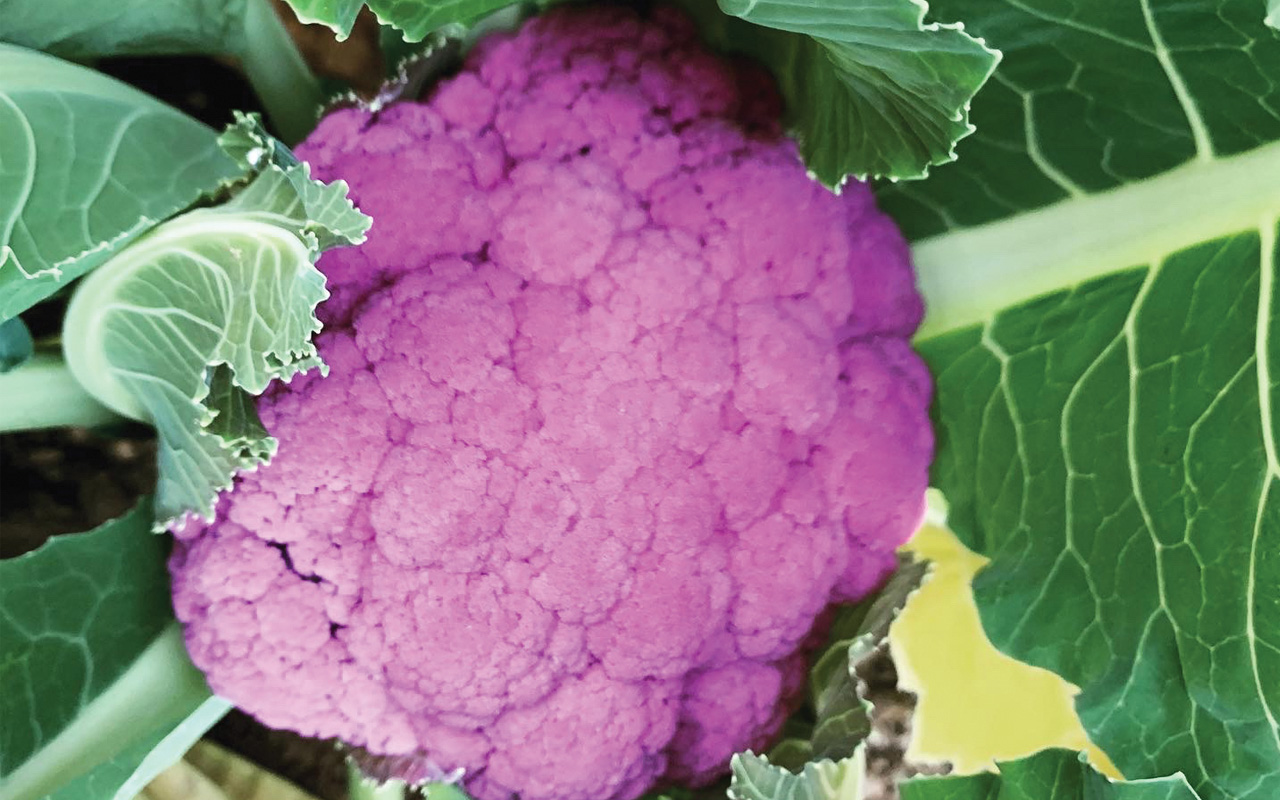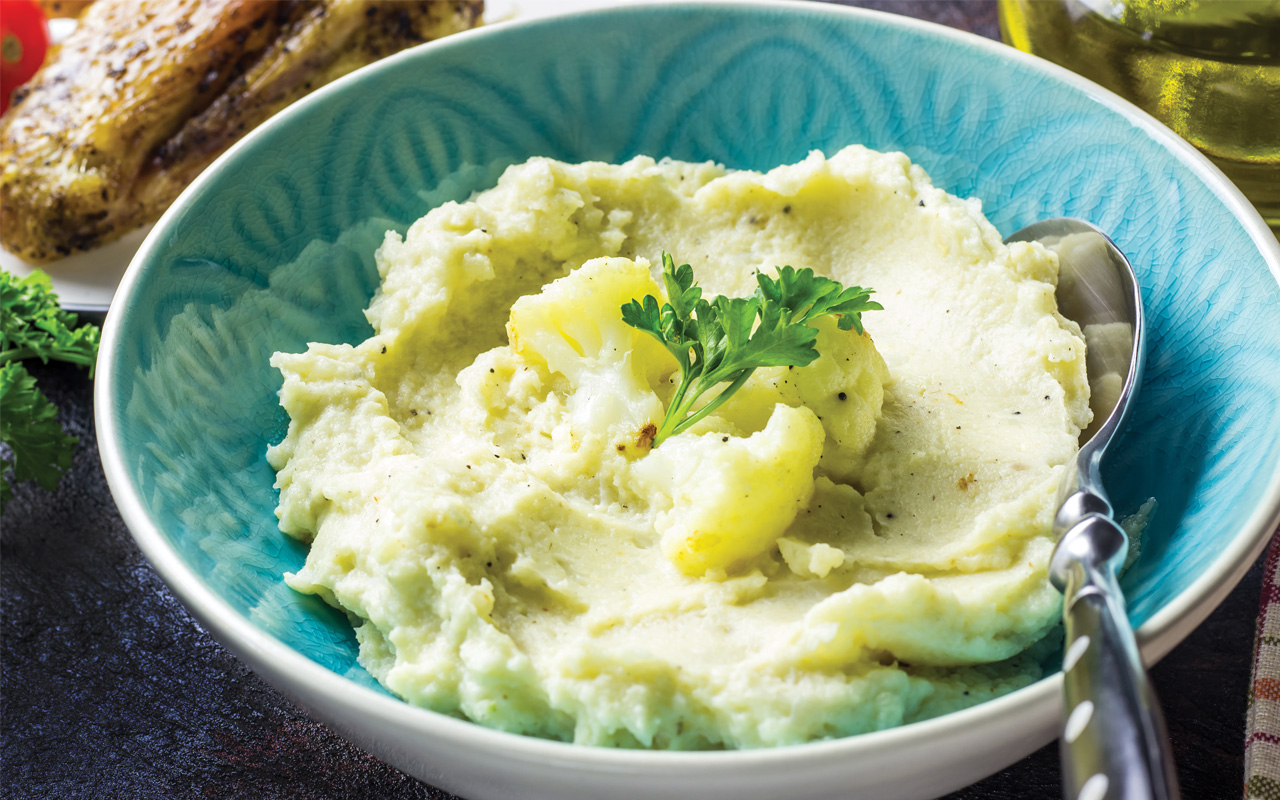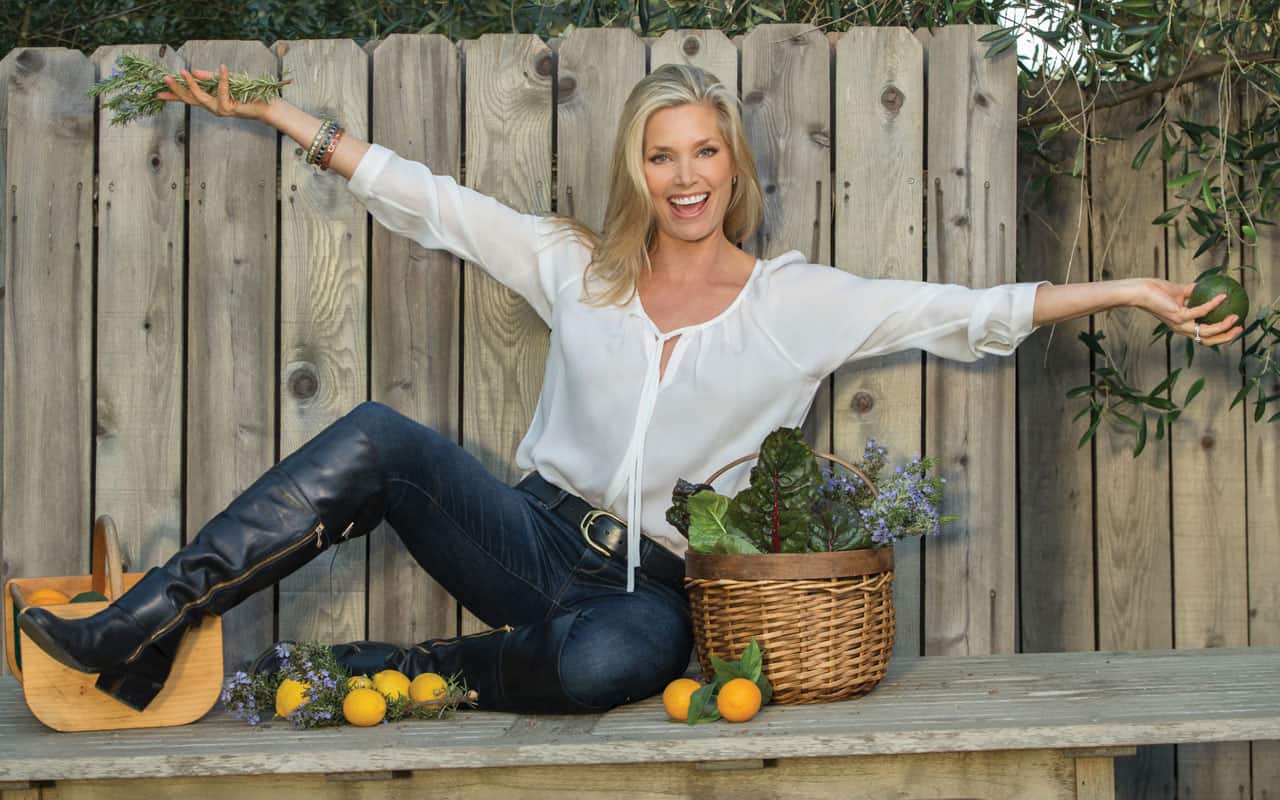
The cauliflower is a compact head of undeveloped flower buds bonded together in little lumps called curds. This vegetable goes way back, more than 300 years, and has been a delicacy since the days of Louis XV! Little did people know back then that this rare commodity, sought after for its pale and appealing looks, contained lots of healthy nutrients. Its uniqueness caught the interest of Louis XV’s mistress, Madame du Barry and the King demanded to have the fashionable cauliflower at all of his feasts. So, you could say, this veggie is fit for a king!
HEALTH BENIFITS
Who knew Cauliflower was so healthy? Rich in fiber and minerals (iron, magnesium and potassium) and has a high vitamin B and C content. One cup of cauliflower has more vitamin C than an orange.
TIME OF PLANTING
October / November is the best time to plant cauliflower. Plants prefer cool weather (60 – 65 degrees is ideal). If it’s too hot, the plant won’t produce a full head.
GROWING
• Cauliflower requires a generous amount of space in the garden to grow, at least a 24” perimeter. Unlike broccoli, you only get one head per plant.
• Prepare the soil with an organic fertilizer. Use Guano, the accumulated excrement of seabirds and bats, as a manure. Guano is a highly effective fertilizer due to its exceptionally high content of nitrogen, phosphate, and potassium: key nutrients essential for plant growth and great for growing cauliflower.
• Cauliflower plants are regularly started in flats, then transplanted to the garden. Start seedlings indoors at least 4-6 weeks before your transplant date.
• When the cauliflower is the size of a tennis ball, cover the heads by tying the biggest leaves of the plant together with a rubber band. This is called “blanching”. If the head is exposed to the sun, the white curds will turn yellow but will still taste the same.
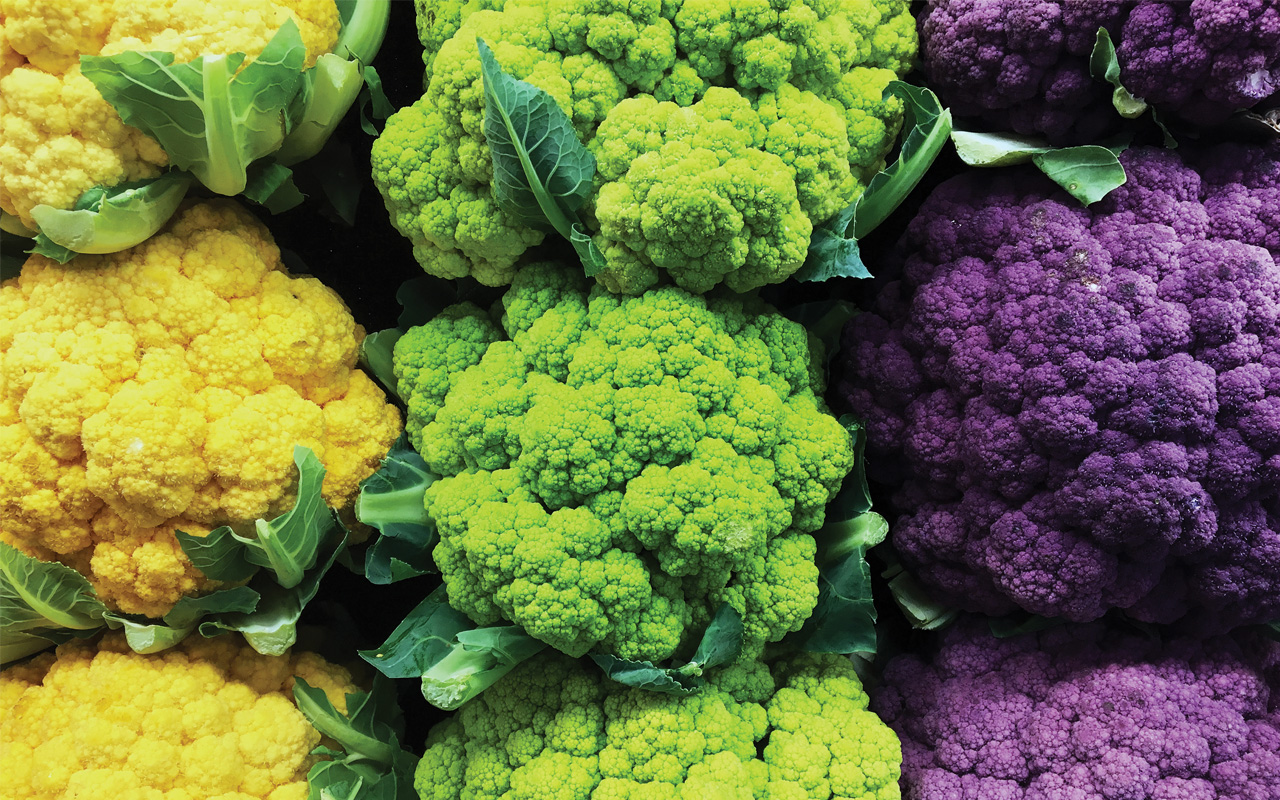
Cheddar, Green, Graffiti Hybrid
COMMON PESTS AND DISEASES
Cabbage butterfly, cabbage looper, and flea beetles can present a problem for your Cauliflower. It also suffers from downy mildew, black rot, and several other diseases.
• Cauliflower, can be protected with row cover to prevent early damage from pests such as flea beetles.
• Attract beneficial insects by planting Alyssum for pests and release ladybugs so they will eat aphids which love cauliflower too!
• Occasionally spraying an Organic insecticidal soap is good practice to keep the insects away. Since bugs breathe through their skin, once the soap covers their body, they suffocate.
• For powdery mildew, spray diluted milk on the leaves, 40% milk and 60% water. Pick off infected leaves and throw them away.
HARVESTING
Plants are usually ready to harvest in about 50 to 100 days, depending on variety, or 7 to 12 days after blanching. When the heads are 6 to 8 inches in diameter, compact, white, and firm, it is time to harvest. Cut the heads off the plant with a large knife.
The cauliflower will begin to pull apart if you harvest it too late. This will happen in only 2 days after it is at its peak.
VARIETIES
Attribute Hybrid – The Attribute Hybrid is an early variety that matures in 60 to 70 days. It has smooth, bright white heads that reach a diameter of approximately 7 inches. Its flavor is savory, with nutty/buttery undertones.
Cheddar Hybrid– The cheddar hybrid is an early orange variety that matures in about 60 to 70 days. It has smooth, uniform, 4 to 7-inch heads that contain nutritious beta-carotene and deepen in color when cooked. The flavor is mild and sweet.
Depurple Hybrid– Purple florets on white stems characterize the unique Depurple Hybrid. It matures in approximately 80 to 100 days, and it’s worth the wait.
Early White Hybrid– For a robust and fast-growing option, consider Early White Hybrid. It may mature in as few as 52 days, and produces tight, pure white heads that measure up to 9 inches across.
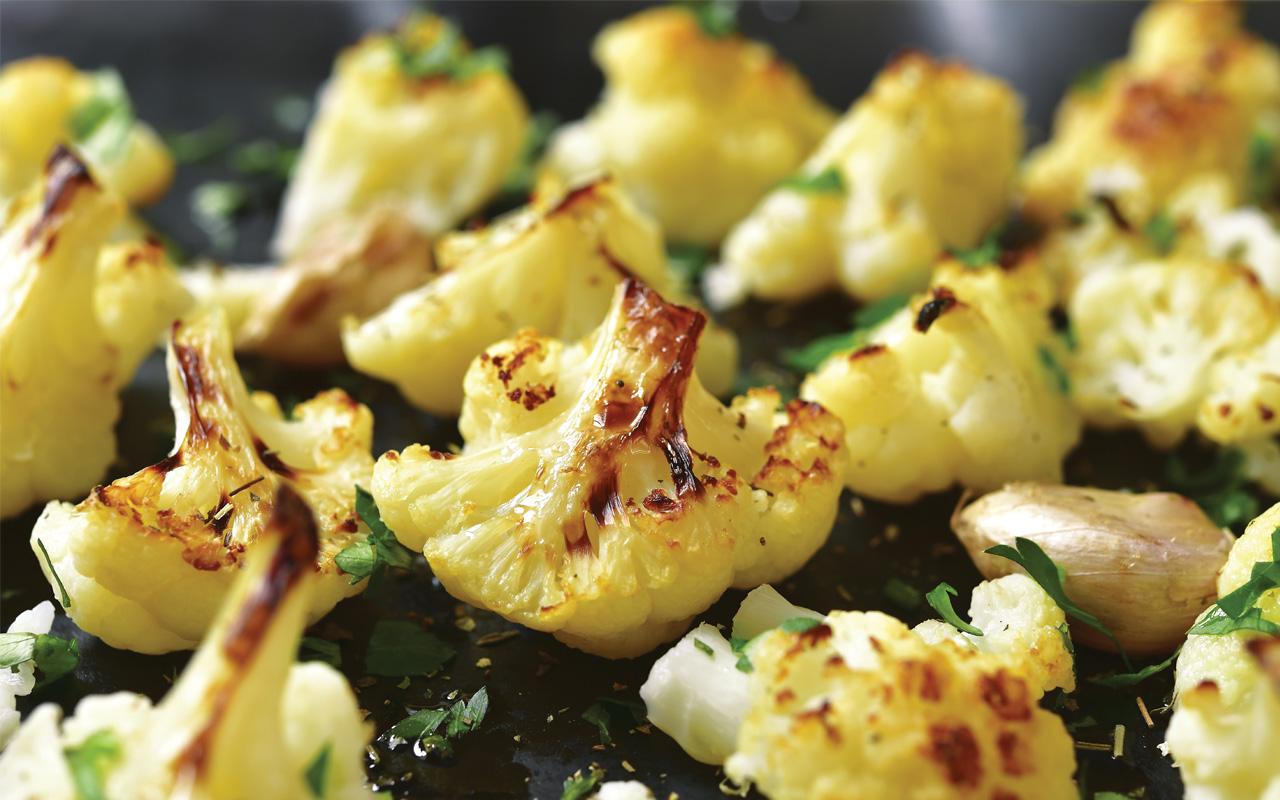
Roasted cauliflower
Flame Star Hybrid– Paler than cheddar types, Flame Star Hybrid is an early orange option that matures in approximately 55 to 60 days. Its heads are firm, with dense, smooth curds and a diameter of about 7 inches. This type exhibits better than average heat tolerance and reaches a height of about 14 inches.
Graffiti Hybrid– This purple beauty matures in 70 to 80 days. The Graffiti Hybrid has a surprisingly bright purple dome of dense curds that reach about 6 to 7 inches across. It has better than average tolerance of humidity and fungal disease, and tops out at approximately 24 inches.
Self-Blanching Snowball– This heirloom white harks back to the “originals” in Europe. The Self-Blanching Snowball matures in 65 to 75 days, and its leaves protect developing heads ranging from approximately 6 to 8 inches across.
Veronica Romanesco Hybrid- This is a cross between cauliflower and broccoli that matures in about 85 days. Heads measure approximately 7 inches across, and consist of unusually pointy and visually interesting lime green whorls of curds that develop in a fractal pattern. Plants reach a height of 18 to 24 inches.
COOKING
Cauliflower has a finer cell structure and when cooked it is the lightest and most delicate compared to its other family members, broccoli, kale and cabbage.
Madame du Barry Cream
This simple recipe was named after the King’s last mistress, Madame Dubarry. Enjoy!
Ingredients:
2 cups of milk
4 cups of water
1 large head of cauliflower chopped into florets
1 med. Russet potato
2 large leeks (white part)
1 tsp. Better than Bouillon
Chives
Salt
Pepper
Peel the potato and cut into small cubes; clean and chop leek; Mix the milk, water & “Better than Bouillon” in a saucepan. Add the leeks, potato and cauliflower florets. Boil for 7-8 minutes, removing some cauliflower florets after 3-5 minutes. Blend everything together to a smooth cream.
Pour into small soup bowls, add the cauliflower florets, a few chives and pepper for garnish. Yum!
Faux-Tatoes
If you are on a low-carb diet and love to eat mashed potatoes you will love this alternative, simple recipe.
Steam a whole head of cauliflower till tender; puree in a blender with butter to your liking and salt and pepper to taste. For “garlic potatoes” you can add a clove or 2 of garlic; for “truffle and parmesan” potatoes, puree with truffle salt and cheese.
Roasted Cauliflower
Delicious cut up, roasted in the oven at high heat with olive oil, salt and fresh garlic. The natural sugars caramelize. So simple but delish!
Cauliflower can be enjoyed fresh, steamed, roasted, stir fried, and pureed. It is an incredibly versatile vegetable that is also great to blanch, freeze, and store for winter.
Try growing cauliflower this cool season, for many good reasons: The amazing health benefits, its variety of colors and shapes, the buttery nutty flavor and if it is fit for a king… it is a perfect fit for your organic garden!
Kelly Emberg, the model gardener
Kelly Emberg, the model gardener For more gardening tips, follow me on Facebook, Instagram, YouTube & Twitter. www.kellyemberg.com

